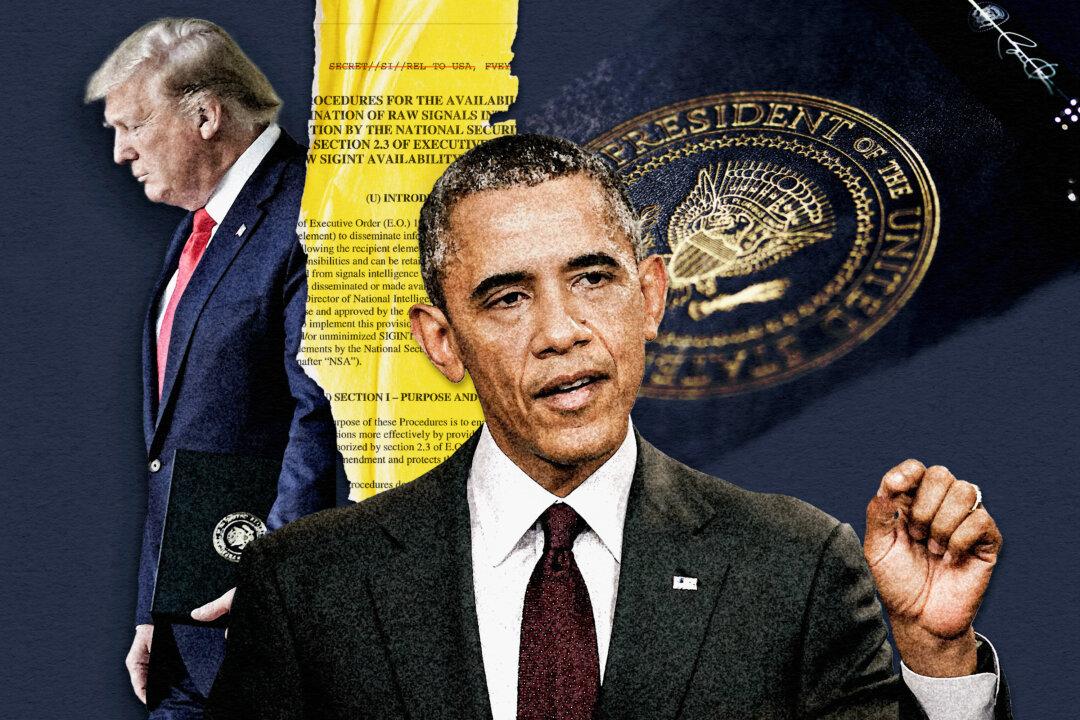Comments made by former CIA Director John Brennan in an interview with MSNBC’s Rachel Maddow suggest that the CIA may have used a tactic known as “reverse targeting” to collect data on members of the Trump campaign.
“I was very concerned and aware that the Russians were trying to leverage U.S. citizens in order to achieve their objectives in the presidential election,” Brennan said.
Despite Brennan’s apparent concerns, he admitted that these contacts may have been completely innocent—there was no proof that these same U.S. citizens had been successfully leveraged by Russian efforts. But that surveillance moved forward anyway, and may have occurred before and after the election.
BRENNAN: When I left office on January 20th of 2017, I had unresolved questions in my mind about whether or not any of those U.S. persons were working in support of the Russian efforts.
Unlike the surveillance of Trump foreign policy adviser Carter Page, which used a traditional FISA warrant granted by the Foreign Intelligence Surveillance Court, the surveillance being described by Brennan occurred under Section 702 of the Foreign Intelligence Surveillance Act (FISA).
Unlike traditional FISA surveillance, Section 702 surveillance isn’t subject to individual FISA Court approvals.
Unfortunately, significant loopholes exist regarding data collection under Section 702. For example, the FBI can “search” collected information using terms that relate to U.S. citizens, and can do so without a warrant.
Reverse targeting is one technique specifically prohibited under Section 702. Reverse targeting relates to the targeting of a foreign individual, with the intent of capturing data on a U.S. citizen.
What Brennan discussed in the interview with Maddow sounds notably similar to reverse targeting. It also sounds eerily close to what the chairman of the House Intelligence Committee, Rep. Devin Nunes (R-Calif.), disclosed in March last year.
“I have seen intelligence reports that clearly show the president-elect and his team were monitored and disseminated out in intelligence-reporting channels. Details about persons associated with the incoming administration, details with little apparent foreign-intelligence value were widely disseminated in intelligence community reporting.
“From what I know right now, it looks like incidental collection. We don’t know exactly how that was picked up but we’re trying to get to the bottom of it.
“This appears to be all legally collected foreign intelligence under FISA, where there was incidental collection that then ended up in reporting channels and was widely disseminated. It’s official IC information. These were intelligence reports. It brings up a lot of concerns about whether things were properly minimized or not.”
MADDOW: So, it’s an intelligence sharing operation between ...
“Last April, the CIA director was shown intelligence that worried him. ... It was passed to the U.S. by an intelligence agency of one of the Baltic states. The CIA cannot act domestically against American citizens so a joint counterintelligence task force was created. The task force included six agencies or departments of government.”
It sounds like the legal envelope was being pushed in regard to the CIA’s domestic involvement and investigative pursuit. It also sounds like a coordinated effort to process and share the collected information that Brennan referred to during his interview.
More importantly, it sounds like the CIA may have used targeted collection of Section 702 data, skipped the minimization requirements, and fed the raw surveillance data directly to the FBI.
It would be helpful if the former CIA director would provide some clarification of his remarks.
What exactly, did he mean by, “Any time we would incidentally collect information on a U.S. person, we would hand that over to the FBI because they have the legal authority to do it”?
Was this targeted Section 702 surveillance using reverse-targeting techniques? Was this being done on all U.S. persons, or did this particular description apply only to specific individuals? Were standard minimization procedures correctly followed by the FBI and CIA?
Incidental collection happens all the time. U.S. citizens are inadvertently caught in foreign surveillance. But Brennan’s comments sounded specific to certain U.S. citizens. Brennan’s comments sounded like a description of the activities that Nunes uncovered in March 2017.
A closer examination is needed. Perhaps we'll get one from the Department of Justice inspector general’s pending report on FISA abuses. Because it sounded like Brennan may have admitted to something close to the illegal targeted surveillance of U.S. citizens.






